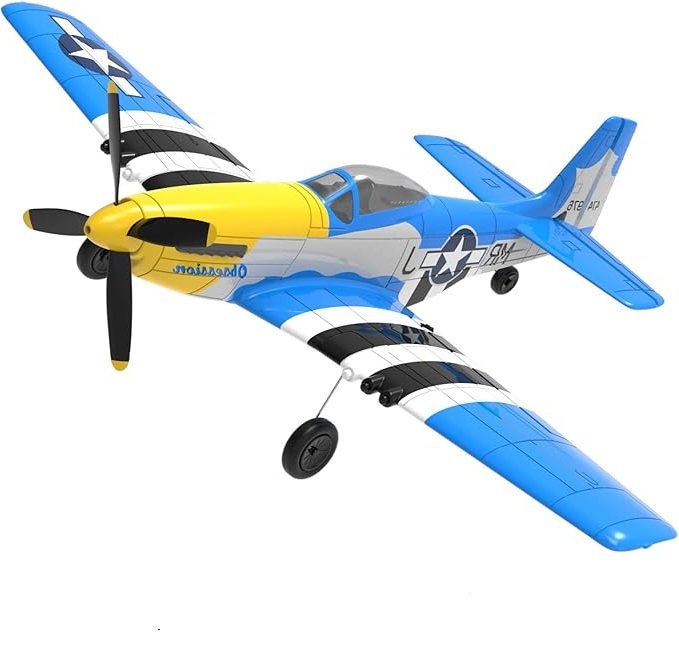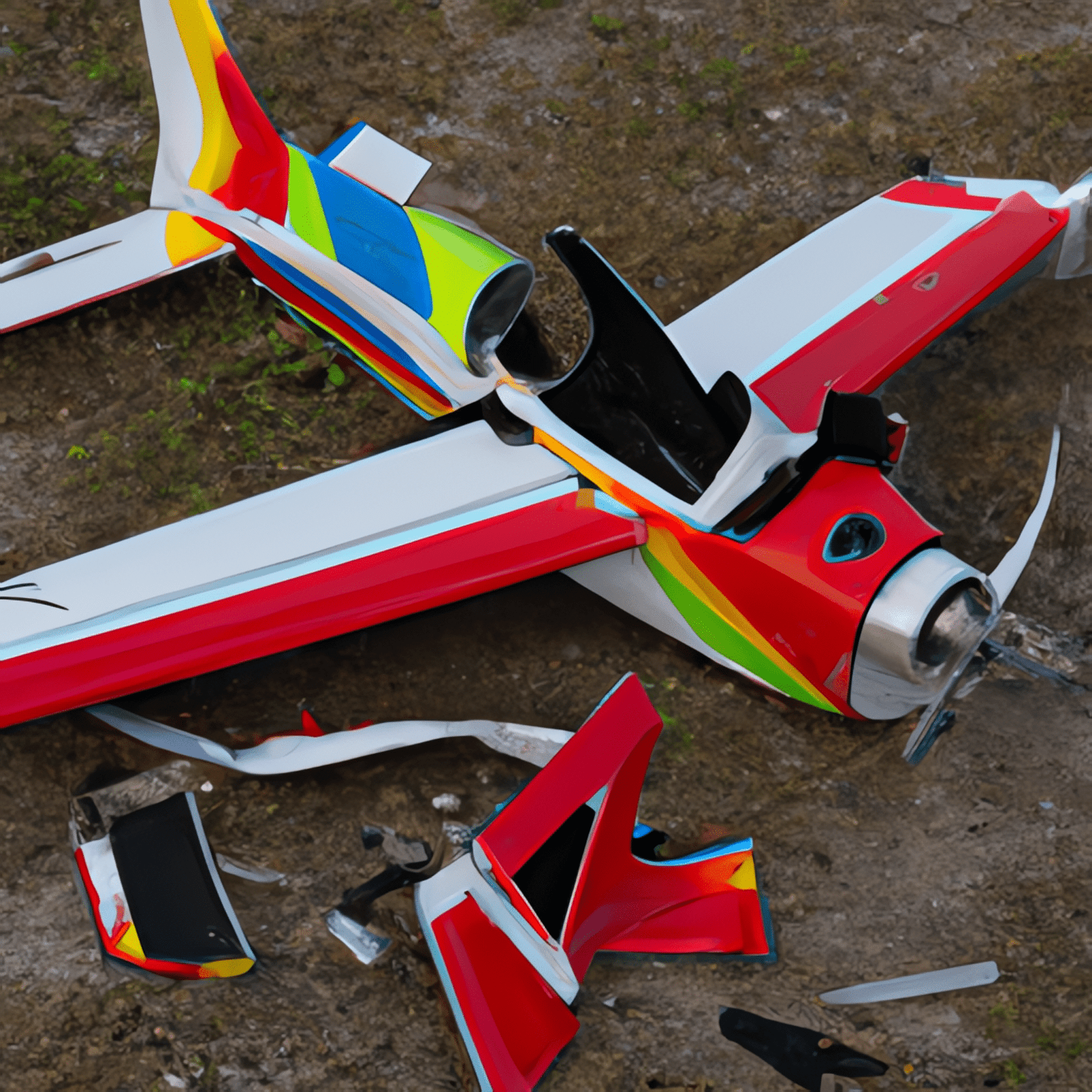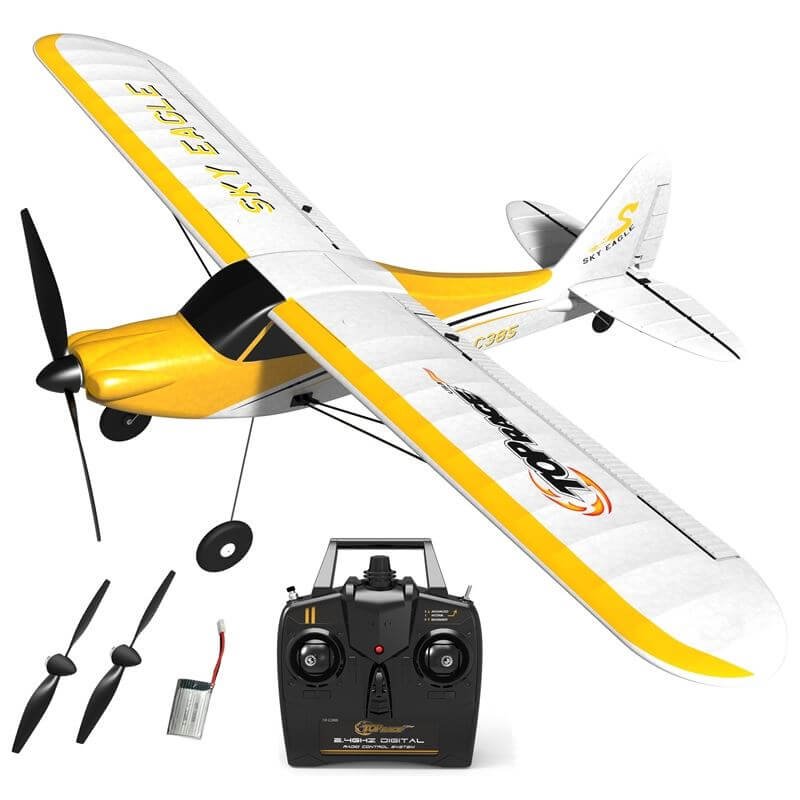As a beginner RC plane hobbyist, you must have often wondered, “Can I fly an RC plane in windy weather, and how much wind is too much for RC planes?” Read on below to get some guidelines that will hopefully make your flying safer, as well as more enjoyable.
Generally, experts advise flying at a maximum wind speed of 15 mph to 20 mph if the wind is steady, and 10mph if it’s not. However, if you’re a learner, fly when wind speeds are no more than 5 mph to 15 mph if steady, and avoid flying when the wind is gusting.
If you regularly fly rc planes, you’ll probably be well versed in dealing with varied wind conditions. However, as a novice, you’ll find there are many variables involved that will determine how safe flying in windy conditions is, so read on below.
As a beginner, you may well be advised to play safe and stick to RC planes for beginners, as listed here. These super easy-to-fly RC planes have built-in stabilization features that help to fly in windy weather.
First, though, how do you measure wind speed and direction?
How Do I Measure Wind Speed?
First, how is wind speed measured? Wind has both speed and direction. Traditionally, anemometers measured wind speed, and wind vanes measured wind direction. Today, some anemometers also come with vanes, and can therefore measure wind direction. There are cup, vane, thermal, sonic, and laser anemometers available now.
Modern anemometers can also measure gusts or wind force.
An Anemometer (difficult to write, never mind say!) is a useful tool to have in your bag if conditions deteriorate whilst you’re flying. Here’s a typical handheld anemometer:
This is an Amazon Choice anemometer available in the US, which can measure wind speed, wind temperature, and wind chill, It will measure airspeed in 5 units: m/s, km/h, ft/min, knots, mph. and wind temp in ℃/℉ (Degree Celsius/Fahrenheit).
Similar anemometers can be bought in the UK (here), and Canada (here).
How Can I Measure Wind Speed Without An App?
In practice, though, most RC plane hobbyists are not as scientific as this and need to understand what is meant by “a bit of wind” without necessarily getting too technical. In the first place, you went into the game for fun!
Experienced flyers suggest simply going into Windfinder.com to tell you what you need to know at a glance. Just feed in your location and check the conditions in your locality.
You can also check the windsock if your flying field has one: it will be fully extended for a 20 mph to 25mph wind and only half-extended at 10 mph.
You can also stand at the center of the flying field and throw a leaf straight up: if it lands 45 feet away in a second, that means the wind speed is around 30mph, so it’s too windy.
If the wind picks up your plane while it’s sitting on the ground, it’s probably too windy.
How Windy Is Too Windy For an RC Plane?
There is no hard and fast rule on how much wind is best for flying an rc plane, and how much is too much (or too little). It depends on the following factors:
- pilot’s flying skills
Generally, most RC flyers recommend working 5 mph to 15 mph winds for beginners. Start with gentle wind conditions and work your way up a little at a time as your flying skills and confidence progress.
- a judgment call
Most veterans also say that in general, the fun factor diminishes after 15 mph, so if flying an rc plane becomes more work than fun, quit before your plane breaks. Learn to respect wind and work with it. Also, learn to trust your gut: if you’re nervous, don’t fly.
- the comfort level or appetite for risk on any particular day
You may fly regularly from one particular location, as a result, you’ll be used to the local conditions, and be comfortable with those conditions.
If you’re an experienced pilot of an rc plane you may rise to the challenge of windier conditions to push yourself to new experiences.
- the type of plane you’re flying
A heavier rc plane like a glow plug model will tend to handle wind better than lighter ones like electric-powered rc airplanes because of their weight. Larger planes are more stable in stronger winds.
Lighter rc airplanes, made of balsa or polystyrene are recommended for a 5mph to 7mph breeze.
- the site and field layout
Aim for a site where there’s a big area for takeoff and you can land straight into the wind. Wind straight down the runway is not much of an issue compared to taking off and landing in a crosswind.
A cross wind will tend to roll your rc airplane over on take-off and push your plane off-course when landing. Always try to land and take off directly into the wind.
- buildings and other wind-confounding obstructions around the airfield
Trees around the field can cause turbulence and gusts of wind, which could catch you off guard. Similarly, if there are buildings around the flying field, particularly tall ones, watch out for unpredictable gusts. A steady wind is much easier to fly in.
How Do I Fly My RC Plane In Windy Weather?
Flying with the wind can be a lot of fun! It also hones your flying skills against the tension and drama of working with the wind, thus boosting your sense of power and confidence. Here are some crucial tips to guide you:
- Check how robust your rc plane model is: can the airframe stand high pressure? Are the linkages and hinges secure? Are the wings firmly mounted? Is the wiring good? You want to be able to rely on the model because you will need full control of it.
- Check your flying area and make sure it’s a safe area, away from buildings and motorists. A steady, constant breeze is good. Turbulence is not good. Stay away from houses, trees, or anything else that will cause the wind to become turbulent and gusty.
- Get off the ground as soon as possible. Climb quickly and reasonably steeply upwind. Altitude is your friend; you can just course-correct up high. The ground is the only thing that will break your plane so get away from it as fast as you can. Take off directly into the wind.
- If it’s a particularly strong wind, you don’t have to do any circuits. You can just fly in a pattern, to the left and then to the right as you face into the wind, and then forwards because you’ve got the wind constantly bringing your plane back to you. Get a feel for it as you let your nerves wear off.
- If you want to fly circuits, don’t fly around yourself. Fly up, then get back around, do figure eights, but always with the plane in front of you. If you make a mistake, the wind is just bringing your plane closer to you where you can see it and you can then course-correct. If you fly around you, you might end up with your plane blown way out behind you and you’ll lose it or crash it.
- Don’t fly for too long, so you’ll have more fuel in the tank, or power in the battery, to power up if needed due to a gust of wind. Also, if you use a lot of fuel, the plane becomes very light. The weight helps in landing well on windy days. Know how long your plane can fly for.
- When flying downwind, don’t slow the plane down and risk stalling. It’s natural for it to pick up speed because its airspeed is now assisted by windspeed, so just keep your controls steady. Aim for a natural, intuitive control and comfort level.
- When you’re landing your plane, expect a little turbulence as it comes down. Wind speeds are likely to slow down at lower altitudes, and they’re the slowest nearest the ground, but probably the most unpredictable due to nearby disruptive features, such as trees. So, don’t be rattled, maintain steady control.
- As you get close to the ground, be prepared to increase speed if the wind gusts. If you hold it at the same speed, it could stall and fall to the ground.
- If things are not going well and your plane is being blown off the course you intended, or you can no longer tell which way it’s going, just cut the throttle and let it land. Cut your losses instead of letting your plane disappear over the horizon altogether.
Here’s a video graphically illustrating these points, by the excellent Bruce of RCModelReviews:
What Is The Best RC Plane for Windy Conditions?
Be sure to choose a suitable rc airplane model that’s predictable, with a wide speed range, and has a good power/weight ratio. Avoid models that are too light, such as those made from balsa or polystyrene.
For beginners, something like the HobbyZone RC Airplane Carbon Cub S 2 with SAFE stabilization technology (More detail here (US), (UK), (Canada) is best. Check out our recommended beginner rc planes here.
Ideally, it should also be something you’ve already flown a bit before and feel comfortable with if the conditions are particularly windy.
So, can you fly an RC plane in windy weather? Yes, you can, if you have the appetite for it, the flying skills, the right plane, a safe site, and conducive field layout, little to no turbulence and gusts, and are comfortable with it!





